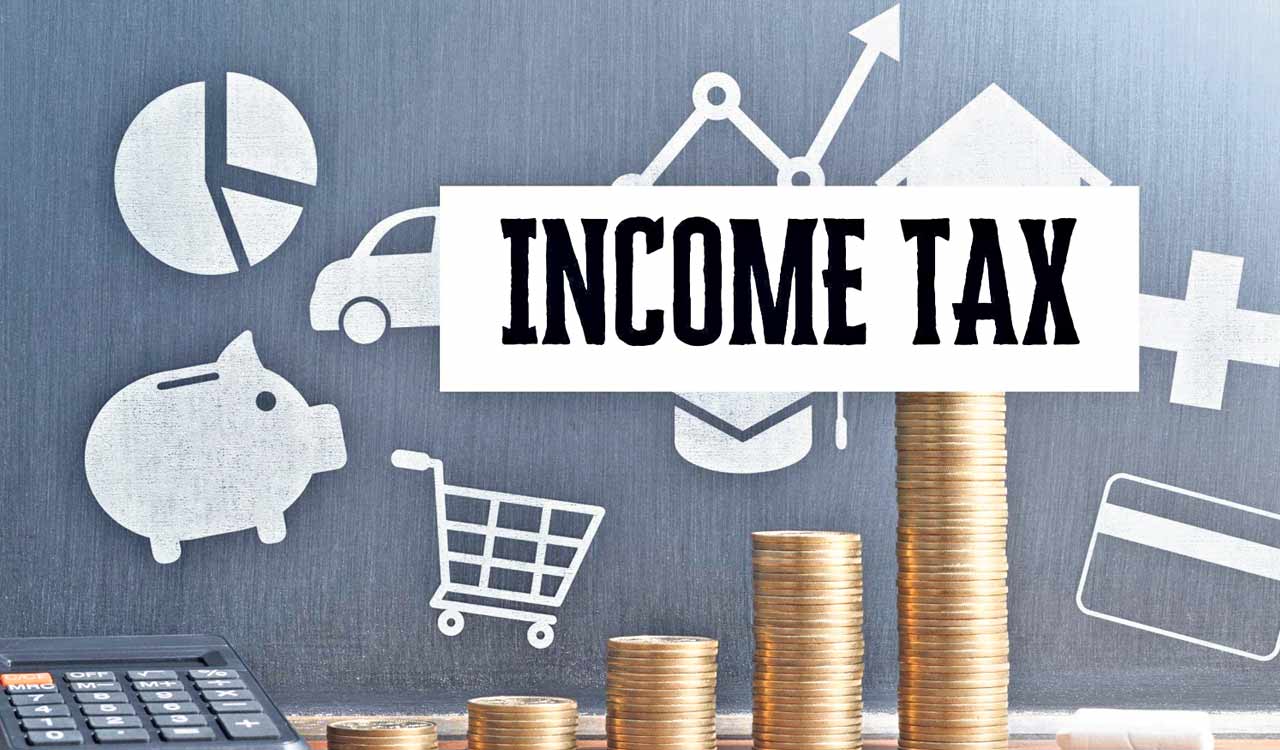Opinion: Design I-T system for Digital Economy

The proposed Bill does not entirely overhaul the existing Income Tax Act 1961, but streamlines terminology and language and simplifies the provisions
Published Date – 20 May 2025, 10:48 PM

By Sushanta Kumar Mahapatra, Md Sikandar Azam
Over the years, the Income Tax Act has evolved along with policy changes, contributing to the nation’s economic development. Despite this, it has been criticised for accumulating amendments, complex provisions, confusing language and the cumbersome nature of the law. Since the implementation of the Income Tax Act 1961, it has been amended nearly 65 times, with more than 4,000 amendments through the Finance Act and occasional ordinances or extraordinary legislative changes.
Amid accelerated technological advancements, green compulsions, and a thriving startup ecosystem, this decades-old law is further out of touch with the economic realities of today’s era. The Income Tax Bill 2025 provides a direction for a streamlined, open, and improved-suited tax regime to address the challenges and modernise the Indian tax system.
Challenges of I-T Act, 1961
The current Income Tax Act has been the pillar that brought stability to India’s direct tax policy, but now it has been violated by inefficiency and complexity due to constant amendments and changing business landscapes. With budding economies and notable use of digital technology evolving as a new benchmark, it is time to reform the decades-old Act with a new tax policy.
* Complexity and Compliance Burden
Over six decades, the Act has been amended numerous times, resulting in 298 to 819 sections and many exemptions and deductions. The complexity of this system forces individuals and companies to depend heavily on tax advisors. Technical terminology and cross-cutting regulations make the law difficult to comprehend, leading to high compliance costs and a mounting administrative burden on taxpayers.
* Outdated provisions in a digital era
The Income Tax Act was drafted in the pre-digital age, which requires updates to align with rapid changes in the financial system and tackle the taxation of digital assets, cryptocurrencies, and gig economy income. The latest amendment to the equalisation levy has been tabled, but the Act still falls short of addressing the digital economy challenge, representing a vast chasm in our tax system.
What the Bill Misses
The proposed Bill does not entirely overhaul the existing Income Tax Act 1961, but streamlines terminology and language and simplifies the provisions. The Bill maintains the basic principles and seeks to simplify the provisions to make them user-friendly.
Digital assessments must be expanded to minimise human intervention and improve efficiency, resulting in future faceless tax assessments and filings
However, it should address issues that burden taxpayers, frustrate administrative efficiency, and secure international investment using technology to stimulate economic growth and innovation. A strong tax system must address significant challenges such as tax evasion, taxation of Virtual Digital Assets (VDAs), simplifying tax filing, and compliance simplicity for taxpayers.
* Simplification of Tax Filing Process
In this digital and AI era, most taxpayers find tax mechanisms complex and depend on tax professionals to comprehend the tax mechanisms, TDS (Tax Deduction at Source), and ITR (Income Tax Returns). It applies across diverse segments of taxpayers from the salaried class to the corporate sector, including professionals and individuals earning income from any source.
Therefore, the tax-filing process should be more accessible to encourage taxpayers to submit their ITRs. This could be achieved with the help of technology, such as AI Chat Box or customer care, to guide step by step, making it easy. Digital assessments must be expanded to minimise human intervention and improve efficiency, resulting in future faceless tax assessments and filings. Real-time dispute resolution mechanisms using AI-based case management must be implemented to improve efficiency and reduce litigation, and taxpayer ombudsperson services should be introduced to efficiently resolve conflicts.
* Clarity on Digital Assets Taxation
With increasing cryptocurrencies and digital assets worldwide, the proposed Bill categorically defines crypto-assets and differentiates them from traditional securities. It recognises crypto assets, non-fungible tokens (NFTs), and other digital assets as VDA properties. These assets will be treated as properties such as gold, securities, and real estate. This signifies VDAs as a legal recognition for the first time in India. This shift aligns with global practices for classifying and recognising digital assets as equal to other securities and property.
However, with the growing digital economy globally, the Bill fails to address the complex taxation system on VDAs, which includes TDS 1% on sales consideration, taxes on capital gains of 30% plus 4% cess, and no offset in case of loss in the VDAs, either in the short or long run.
Considering the VDAs for taxation and compliance, the Bill should address the concerns of digital asset investors related to protection, market regulation, and enforcement mechanisms. Unlike the US, UK, and Australia, the proposed Act should also provide a standardised tax rate for gains and allow offsets in case of losses from digital asset transactions.
Conclusion
In this digital era, the Income Tax Act of 1961 seems outdated and requires urgent reform to optimise technology to simplify the tax system. This move will assist individuals in decoding the tax mechanism, resulting in less dependency on tax professionals and encouraging them to file their own ITR. By adopting technology to reduce complexity, improve administrative effectiveness, and bring provisions in line with the necessities of the digital economy, India will be able to step towards a tax system that is robust, equitable, and growth-friendly.
The new Income Tax Act should promote taxpayer-friendly policies by using technology to simplify tax filing, ensure uniformity in digital asset taxation, implement faster refund mechanisms, and improve dispute resolution frameworks. A transparent, technology-driven, and pro-growth tax system enhances revenue collection while ensuring fairness, predictability, and economic prosperity.

(Sushanta Kumar Mahapatra teaches at the Department of Economics, ICFAI School of Social Sciences, and Md Sikandar Azam teaches at the Department of Finance and Accounting, ICFAI Business School, ICFAI Foundation for Higher Education, Deemed University, Hyderabad)






